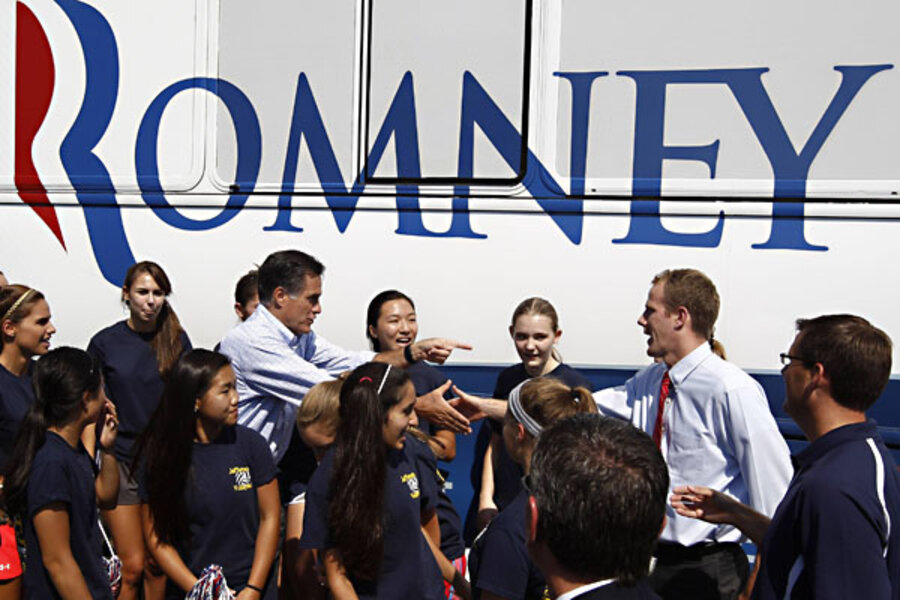What Mitt Romney didn't learn from Ronald Reagan about taxes
Loading...
If only Mitt Romney had paid attention to Ronald Reagan.
There are so many things the former Massachusetts governor could learn from the former California governor’s presidential campaigns. But I have in mind only one lesson not learned—how Reagan ran on tax reform in 1984.
Reagan only cautiously embraced the idea of rewriting the tax code in ’84 (see Alan Murray and Jeff Birnbaum’s fine retelling of the history of the 1986 Tax Reform Act—Showdown at Gucci Gulch). But he cleverly used the tantalizing prospect of reform without ever overpromising.
This is what Reagan had to say in his January, 1984 State of the Union Address:
“Let us go forward with an historic reform for fairness, simplicity, and incentives for growth. I am asking [Treasury] Secretary Don Regan for a plan for action to simplify the entire tax code, so all taxpayers, big and small, are treated more fairly. And I believe such a plan could result in that underground economy being brought into the sunlight of honest tax compliance. And it could make the tax base broader, so personal tax rates could come down, not go up. I’ve asked that specific recommendations, consistent with those objectives, be presented to me by December 1984.”
Note to Gov. Romney: Reagan cast reform in gauzy generalities of fairness, simplicity, and economic growth. He said he might broaden the tax base, but didn’t say how. He said he might cut tax rates, but didn’t say by how much. And he said he wanted the Treasury Secretary to get him a specific plan in December, not accidently a month after the 1984 election.
Romney, by contrast, not only promised to cut tax rates, he even said by exactly how much–20 percent across the board. Reagan’s popular goals of fairness and simplicity play distinct second fiddle to Romney’s focus on tax cuts for job creators. And instead of saying he’ll craft a plan of his own, Romney’s campaign says the details should be left to Congress. Given the level of public confidence in the Hill, he might as well have promised to turn it over to Snooki.
Romney’s biggest problem, though, is that he is so transparently trying to have it both ways. On one hand, explicit promises of tax rate cuts for all. On the other, stonewalling all questions about which popular subsidies he’d ditch.
This tactic is hardly unique in political campaigns. After all, why would any politician disclose that part of his agenda sure to make voters mad? Yet, it is fundamentally misleading. And it is causing Romney no end of grief.
Reagan, recall, was ambiguous about both sides of the bargain. This allowed him to remain purposefully vague about the gory details of tax reform throughout the ’84 campaign. And he was almost never challenged on it. Democratic presidential candidate Walter Mondale borrowed a line from a popular fast-food chain ad to ask “where’s the beef” in an effort to challenge his opponent’s fuzzy campaign promises. But Mondale was talking about primary opponent Gary Hart, not Reagan.
Romney isn’t so lucky. Sure, promising specific rate cuts was popular, especially during the GOP primaries. But Romney’s very act of explicitly laying out those rate cuts is driving deeply-skeptical general election voters to demand to know about the other half of the transaction.
The masterful Reagan gave himself both a powerful campaign issue and enough running room to propose, and eventually convince Congress to pass, the most ambitious tax reform of our time.
Now, on an issue that Republicans usually own, Romney is on the defensive. If before Nov. 6 he identifies which tax preferences he’d cut, he will unleash a firestorm of criticism from both Democrats and those special interests that benefit from these subsides. This will damage both his election chances and likelihood of reform no matter who wins in November. If Romney keeps silent, he’ll be unable to claim any kind of mandate for reform.
Somewhere, Ronald Reagan is looking on in sadness.







